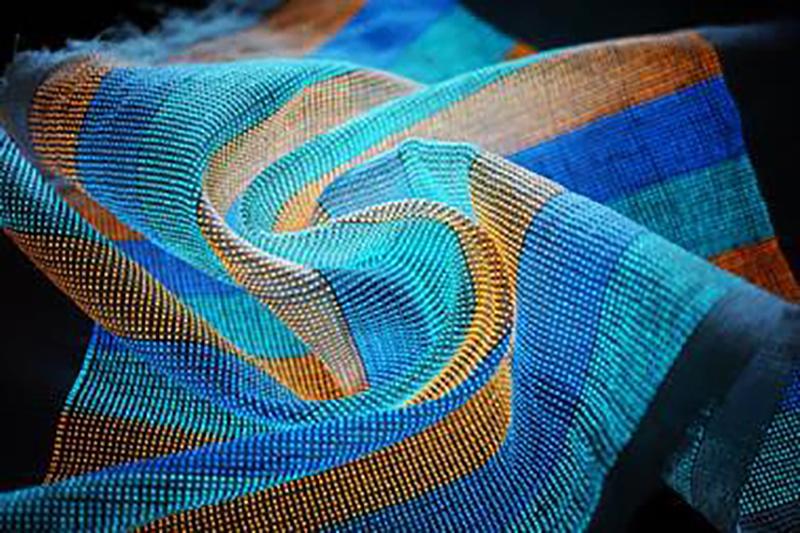Electronic fabric displays glow up
What is said to be the ‘largest’ glowing, flexible textile display is being weaved together using conductive polymer strands and luminescent fibres, allowing wearers to read messages or instructions and communicate through their sleeve. Reaching 6m long, the flexible textile display can be folded, bent and withstand 100 cycles in a washing machine.

‘We demonstrated that large-area display textiles can be produced by weaving transparent conductive weft and luminescent warp fibres using an industrial rapier loom,’ says Huisheng Peng, Professor at Fudan University, China. ‘The integration of interactive functionalities, such as a keyboard and power supply, with the display textile forms an electronic textile system that can serve as a communication tool…We hope that it will be able to help individuals with voice, speech or language difficulties to express themselves.’
The fabric contains 500,000 electroluminescent (EL) units spaced only 800μm apart. It is made from three types of yarn – a transparent, conductive, ionic-liquid-doped, polyurethane yarn; a commercial, silver-plated, conductive nylon thread coated with luminescent zinc sulphide; and a conventional cotton or polyester.
Each time the two conductive yarn types intersect, an EL unit is located – when connected to a low-power alternating voltage the threads turn blue. The team suggests the colour can be changed by adding small amounts of copper or manganese to the phosphorus sulphide.
Indium tin oxide (ITO) and silver nanowire transparent electrodes are the most commonly used transparent conductive materials. However, Peng explains that ‘ITO is prepared by magnetron sputtering, which is difficult to deposit continuously on the fibre surface, and the thin silver nanowire coating on fibres is vulnerable to frictions during weaving.
‘Our ionic-liquid-doped polyurethane gel, which served as a highly uniform and transparent weft fibre, could deform to fit the surface of the luminescent warp and formed a stable surface contact during weaving,’ Peng notes. ‘The elastic surface contact resulted in an electric field at the curved surface that was as uniform as that achieved by planar devices, facilitating the formation of a homogenous and stable display textile.’
Commercially available zinc sulphide phosphors are dispersed in waterborne polyurethane to obtain the luminescent warp. ‘After degassing in a vacuum oven, the as-prepared mixtures were loaded on the silver-plated nylon yarns on a continuous producing line. To obtain transparent conductive weft, polyurethane ionic gel fibre was spun from the transparent ionic-liquid-doped polyurethane gel,’ Peng says.
To turn on the EL units, the team applies an alternating voltage to the luminescent warps and conductive wefts, generating a low, microampere current to power the units. The electrical signals from the driver circuit are scanned row-by-row onto the array of EL units to output the image, achieved by connecting the warp and weft fibre electrodes to the display driver circuits.
Peng believes the fabric could be scalable as nylon and polyester fibres could also be co-woven for various applications. ‘However, it is still challenging to connecting the thousands of warp and weft fibre electrodes to the display driver circuits in an efficient and precise way.’







